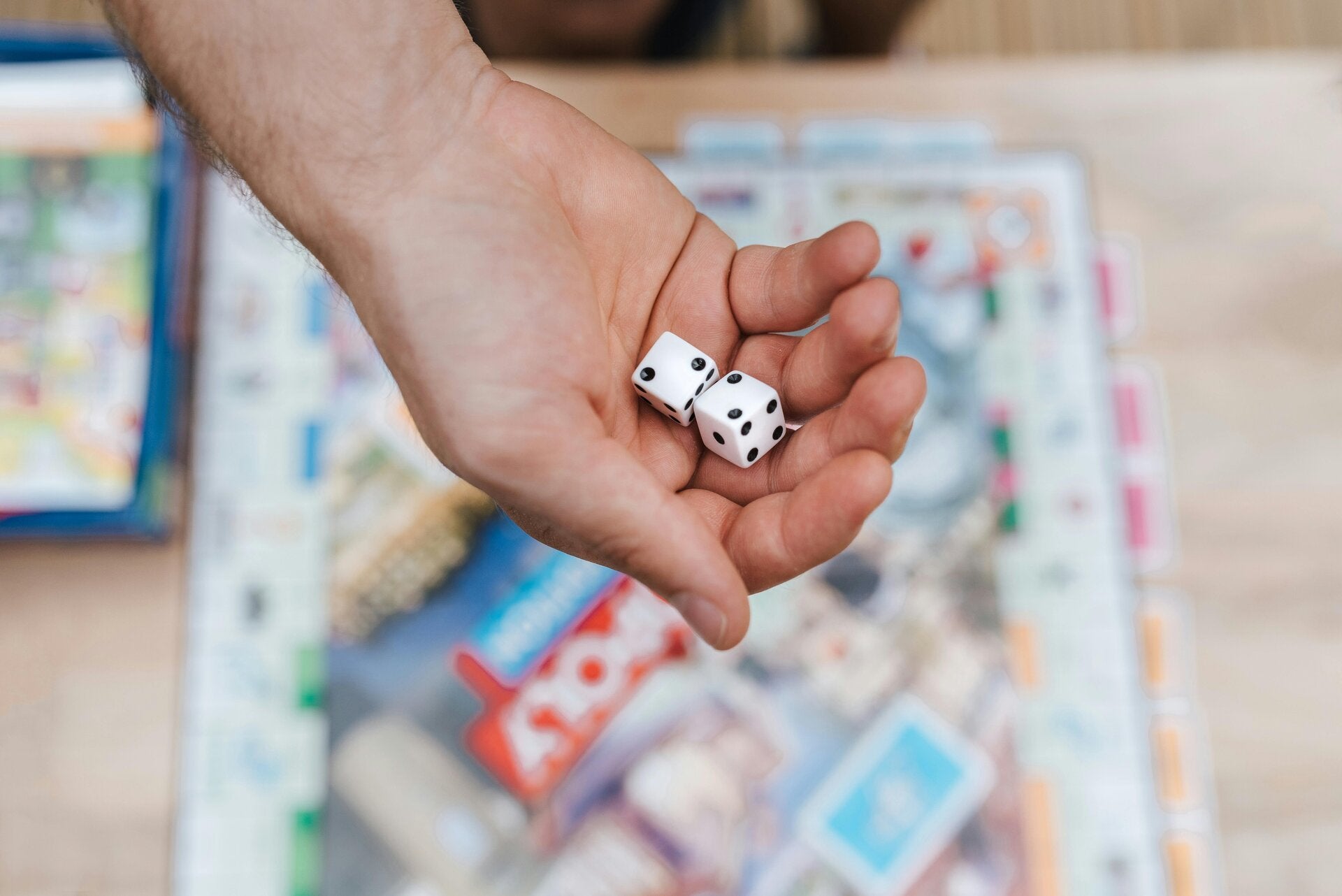Game Design Hints
Welcome to my game design hints! Aspiring to create captivating games? This page offers crucial advice and insights to refine your skills and avoid common beginner mistakes. Dive in and level up your game design expertise!

16 hints of advice
I have 16 hints of advice to share that can drastically improve your game design process and the quality of your final product. Keep these in mind as you develop your games!

Avoid randomizers playing the game
Ensure that random elements enhance gameplay without dictating the entire experience. Randomizers should never play the game for you. It should feel like it's under the players agency.

Hire a play tester
Getting unbiased feedback is invaluable. Hire a play tester to identify issues and provide suggestions for improvement. It is important to have someone else break your game so you don't have to.
Game builder sins
How to tell if you're a good game maker! The inverse of each point is how you can tell you’re on your way to being a good game maker.
- Do you use a single uninspired monochrome color line to define your entire level ?
- Is the map full of unfair kaizo swarm hazards ( Including dumb enemies & environmental hazards but no way to fight either ) ?
- Are enemies immune to those environmental hazards ( including gravity )?
- Is there a annoying trivia section with a unreasonable failure timer & no hints ?
- Are the themes of the game completely unrelated to what it was inspired by ? For example : Cameos & cross-overs .
- Are any of your boards a large maze of teleporters with out any incentive waiting on the other side of it besides a exit ?
- Do you rely on excessive code to limit freedom of movement ; but still struggle to play due to bad controls ?
- Do you put perverted stuff in your game with-out warning players at the title ?
- Did you take someone else's game, change one object in it & call it yours before uploading it?
- Is the game uglier than a slide show & require pixel perfect timing to play ?
- Does your game lack music & art that reacts to what is happening in game ?
- Do all of the problems in the game require violent solutions ?
- Do any of the bosses have a back-story & a motivation besides " Evil bullet sponge " ?
- Is there a locked door that can never be opened ?
What these "sins" teach you
Visual design
If you only use a single bland color line to represent walls, your level will feel lifeless. Good ZZT games use varied colors, symbols, and ASCII creativity to suggest texture, materials, or story mood.
Hazards and fairness
Swarming enemies or hazards with no counterplay frustrate players. A solid design gives players options, resources, or clever ways to turn dangers into advantages, instead of raw punishment.
Enemy logic
When enemies ignore hazards that hurt the player (like water, gravity, or traps), it feels unfair. Good design makes world rules consistent for both player and enemies.
Trivia / tests of knowledge
Unfair timed trivia feels like filler. Engaging mini-games or puzzles with thematic hints keep momentum without breaking immersion.
Theme consistency
Crossovers and cameos can be funny, but if there’s no cohesion to the theme, your game loses identity. Strong games stick to a tone, style, or world logic—even if surreal.
Teleporter mazes
These are a classic newbie trap. They’re boring without reward. Designs improve when every maze, teleporter, or puzzle offers payoffs: story, resources, or a fun twist.
Over-coded limitations
Restricting movement by hacking endless scripts is clunky, especially if controls are slippery. The best designers embrace its simple engine, making puzzles and combat feel smooth, not forced.
Content warnings
Surprise NSFW content alienates players. If you’re going adult, signal it up front. Respect builds trust.
Plagiarism
Reskinning someone else’s board and claiming credit hurts the community. Original work, even if rough, is respected more than copying.
Presentation and flow
Ugly boards with pixel-perfect twitch timing don’t feel playable.
The game shines when players have clarity, readable visuals, and skill-based—not luck-based—challenges.
The game should never over stay it's welcome.
Art and audio reactivity
Music and simple ASCII graphics that shift with events make the world alive. If nothing reacts, the world feels static.
Violence vs. creativity
Good games offer nonviolent options: puzzles, dialogue, trade, exploration. Violence-only gameplay limits engagement.
Boss design
Bosses with stories, gimmicks, or unique behaviors are memorable compared to “just a bullet sponge.”
Unopenable doors
Fake or broken keys/locks scream sloppy design. If you tease a locked room, let players open it—eventually.
How to tell you’re a good designer
- You design environments that look alive, not monotone.
- You balance hazards with fair solutions.
- You keep consistent rules for players and enemies.
- You build puzzles with context and narrative weight.
- You stick to thematic inspiration but add your own originality.
- You reward effort with exploration or story payoffs.
- You avoid clunky restrictions and instead enable player expression.
- You respect the audience with clear warnings about tone/content.
- You value originality over shortcut plagiarism.
- You present challenges that are clean, clear, and rewarding.
- You make the world feel reactive through music and art.
- You provide varied problem-solving—not just combat.
- You give villains and bosses motives, gimmicks, or clever mechanics.
- You avoid “fake doors” and wasted effort; everything has purpose.
Conclusion
By internalizing these game design hints, you're well on your way to creating more engaging, balanced, and enjoyable games. Keep experimenting, learning, and refining your craft. The world needs more great games!
Create Your Own Website With Webador